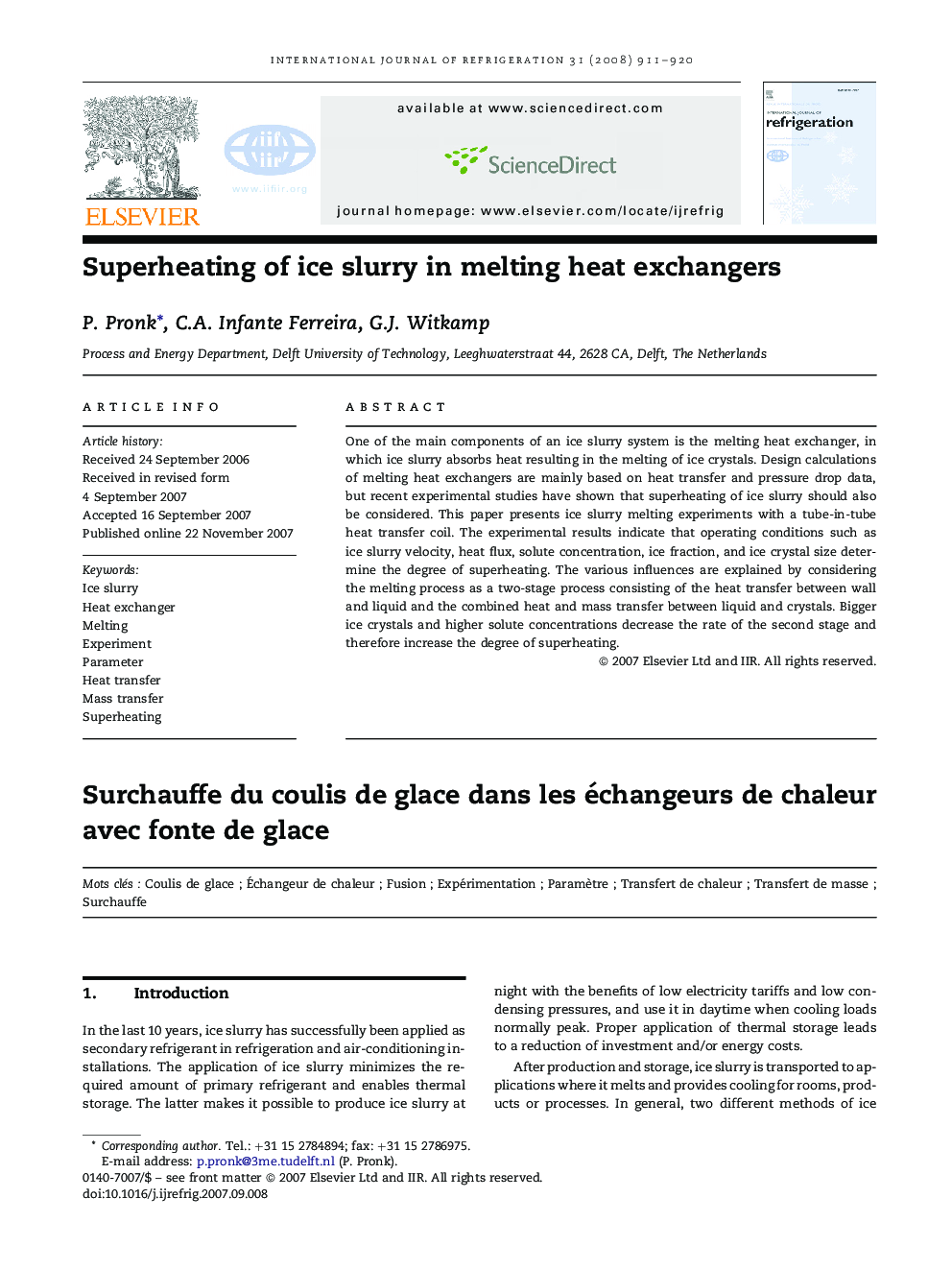| Article ID | Journal | Published Year | Pages | File Type |
|---|---|---|---|---|
| 789959 | International Journal of Refrigeration | 2008 | 10 Pages |
One of the main components of an ice slurry system is the melting heat exchanger, in which ice slurry absorbs heat resulting in the melting of ice crystals. Design calculations of melting heat exchangers are mainly based on heat transfer and pressure drop data, but recent experimental studies have shown that superheating of ice slurry should also be considered. This paper presents ice slurry melting experiments with a tube-in-tube heat transfer coil. The experimental results indicate that operating conditions such as ice slurry velocity, heat flux, solute concentration, ice fraction, and ice crystal size determine the degree of superheating. The various influences are explained by considering the melting process as a two-stage process consisting of the heat transfer between wall and liquid and the combined heat and mass transfer between liquid and crystals. Bigger ice crystals and higher solute concentrations decrease the rate of the second stage and therefore increase the degree of superheating.
